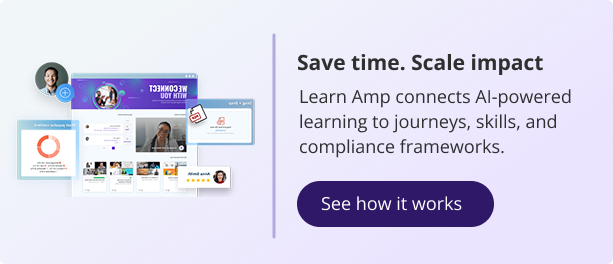“Engagement isn’t something you can demand, it’s something you design.”
If you’re in L&D, you’ve probably felt the frustration of chasing engagement. You’ve launched a new platform, sent reminders, added points, maybe even tried gamification. And still, people log in once and drift away. It’s not that they don’t want to learn. It’s that we’ve been treating engagement as a target instead of an experience.
Engagement isn’t a switch to flip. It’s the natural outcome of good design, autonomy, and trust.
The problem with forced engagement
Too many learning initiatives start from the wrong question: How do we make people use this? That mindset leads to nudges, reminders, and rewards that might create clicks but rarely create commitment.
When people feel coerced, engagement becomes compliance. And compliance is not learning.
It’s easy to see why this happens. Under pressure to show quick adoption numbers, L&D teams often optimise for participation over purpose. But participation without meaning is like applause after a bad joke. It fills the silence but changes nothing.
Design for pull, not push
The most effective learning cultures don’t push content, they design for pull. They build experiences people want to engage with because the learning feels relevant, useful, and human.
So how do you create that kind of environment?
1. Start with curiosity, not content.
Before building another module, ask what people are actually trying to solve. Real learning starts with a real question. (Read our blog about how curiosity is rocket fuel for performance)
2. Give people autonomy.
Let employees choose what, when, and how they learn. Ownership builds intrinsic motivation, and intrinsic motivation beats points and prizes every time.
3. Connect learning to identity.
People engage when learning feels like a path to who they want to become, not just another checkbox on their to-do list.
4. Make it social.
Learning sticks when it’s shared. Design opportunities for people to swap stories, discuss challenges, and build on each other’s ideas.
5. Remove friction.
If your learning system feels like a maze, curiosity dies at the login screen. The best learning design feels seamless, not structured for admin convenience.
Engagement is a mirror, not a metric
When engagement is low, it’s rarely because learners are lazy. It’s because the experience isn’t speaking to them. Engagement reflects how well your design meets people where they are, not how many reminders you send.
So stop forcing engagement. Start designing for desire. Give people learning that feels like a privilege, not an obligation.
When you do, participation stops being a KPI and starts being a signal that something deeper is working: a culture of curiosity, autonomy, and continuous growth.
Because engagement can’t be demanded. It can only be earned.




